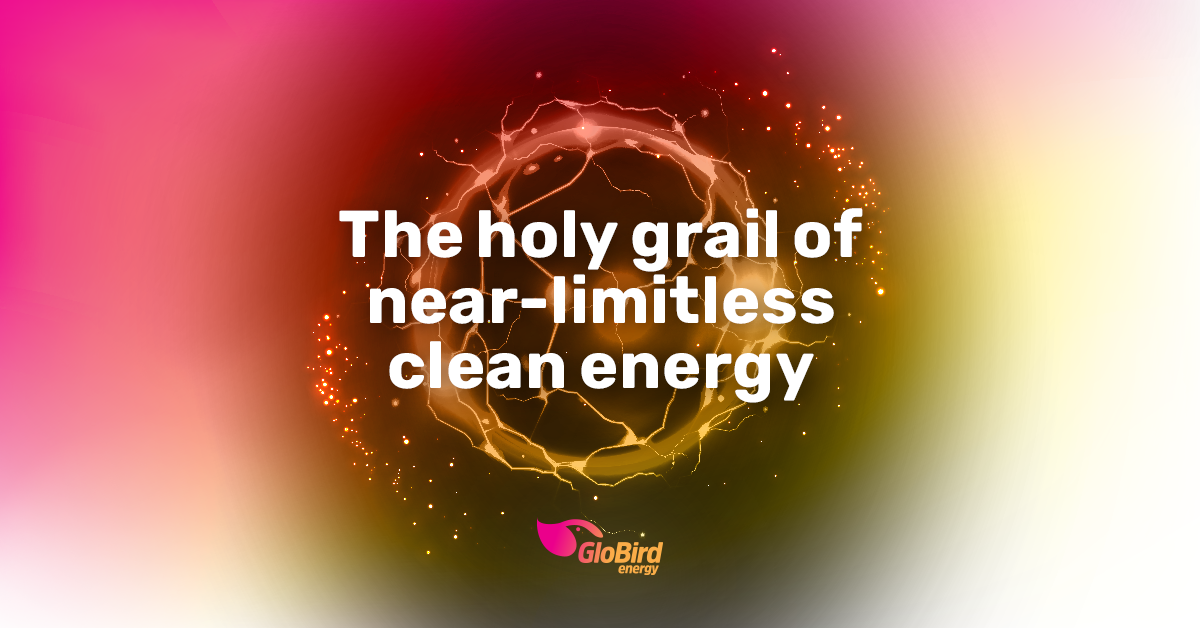The pursuit of the energy holy grail of nuclear fusion continues apace and, while we might not be quite as optimistic as the people involved in the research and development, we are “barracking” for them to be successful.
Right now, the question seems to be more “Which will be the first to make the breakthrough that changes the energy landscape forever?”, rather than “Will that ever happen?”.
Certainly, there’s no shortage of expertise and financing going into the quest.
The battle of two suns
While they’re not directly competing against each other, there is something of a race going on right now as two very different projects chase the ultimate goal of near-limitless clean energy through nuclear fusion.
Recently, China’s “artificial sun” reactor broke its own record for maintaining super-hot plasma.
On January 20, the Experimental Advanced Superconducting Tokamak (EAST) nuclear fusion reactor maintained a steady, highly confined loop of plasma for 1,066 seconds (17 minutes and 43 seconds), more than double its previous best of 403 seconds.
Meanwhile, the private start-up Helion (sun in Greek) is also in the news thanks to a $425 million funding round, backed by billionaires like Sam Altman and Peter Thiel. With more than $1 billion raised, the company is now valued at $5.4 billion.
Nuclear fusion isn’t easy to harness
Nuclear fusion, which could provide a near-unlimited power source with no greenhouse gas emissions and minimal waste to dispose of, has long been seen as the future of energy.
Scientists have been working on the technology for more than 70 years. Researchers now expect fusion power to be available within decades, although most concede it could take much longer.
Nuclear fusion reactors are nicknamed “artificial suns” because they generate energy in a similar way to the sun, that is by fusing two light atoms into a single heavy atom via heat and pressure. But because the sun has a lot more pressure than our reactors can create, we need to use temperatures that are many times hotter than the sun.
Ultimately, the breakthrough they’re all seeking is what’s referred to as “ignition”, which is the point at which nuclear fusion creates its own energy and sustains its own reaction.
Is China now leading the race?
Without doubt EAST’s new record is rightly being touted as a significant step towards a future where fusion power plants generate electricity.
Importantly, the data gathered by EAST will support the development of other reactors, both in China and internationally. China is part of the International Thermonuclear Experimental Reactor (ITER) program, which involves dozens of countries, including the US, UK, Japan, South Korea, and Russia.
EAST is a magnetic confinement reactor, or tokamak, designed to keep the plasma continuously burning for prolonged periods. Future reactors will have to maintain prolonged, confined plasma loops to generate electricity.
At this stage, all nuclear fusion reactors use far more energy than they produce. In 2022, the US National Ignition Facility’s fusion reactor briefly achieved ignition in its core using a different experimental method to EAST, but the reactor as a whole still used more energy than it consumed.
Are all fusion reactors the same?
Tokamaks like EAST are the most common nuclear fusion reactors. They heat up plasma and trap it inside a doughnut-shaped reactor chamber with powerful magnetic fields.
The ITER reactor being built in southern France contains the world’s most powerful magnet, but it won’t fire up until 2039, at the earliest. While it will be an experimental tool to create sustained fusion for research purposes, it’s hoped that the ITER could pave the way for fusion power plants.
Meanwhile, Helion, a start-up founded in 2013, thinks it can build a nuclear fusion reactor and power plant and start supplying energy by 2028 by taking a different approach than other reactors.
Most experimental reactors compress plasma using magnetic or inertial confinement to heat the plasma enough to spark a fusion reaction. Once that happens, the fusion-generated heat powers a steam turbine to generate electricity.
Helion is using a different approach, dispensing with the steam turbine. Fuel (deuterium and helium-3) is injected into both ends of an hourglass-shaped reactor and heated to form plasma. Magnets form the plasma into doughnut shapes and fire them at each other at speeds up to 1 million MPH. They collide in the narrow middle section of the reactor and are further compressed by magnets there. That heats them up to the magic 100 million degrees Celsius, creating fusion.
Helion’s website explains it like this: “As the plasma expands, it pushes back on the magnetic field from the machine’s magnets. By Faraday’s Law, the change in field induces current, which is directly recaptured as electricity, allowing Helion’s fusion generator to skip the steam cycle.”
Will Helion really be operational within a few years?
Simply bypassing that final step (the steam turbine) isn’t enough to suggest that Helion’s approach will be able to make the breakthrough that allows for a fully functional fusion power plant in the next couple of years.
Yes, their system is simpler and potentially more efficient than one involving a steam turbine. And, yes, they have generated fast enough pulse rates to achieve fusion. However, they have still only done so on a small scale.
“There [are] some big engineering challenges to get to those high repetition rates at the kind of big pulse powers where we talk about millions of amps,” Helion CEO David Kirtley told TechCrunch.
In other words, the yet-to-be-surmounted challenges remain the same for all experimental reactors.
Fusion produces a huge surge of energy all at once and, so far, no one has been able to control and harness that.
Helion thinks its simpler system is part of the potential solution to the massive challenge but has yet to prove it can do it experimentally, let alone commercially.
So, we continue to watch with interest … and hope.
